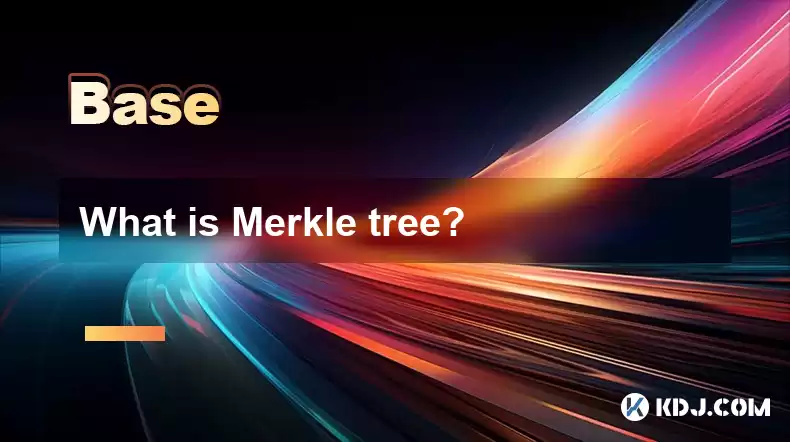-
 Bitcoin
Bitcoin $117400
-0.46% -
 Ethereum
Ethereum $3768
0.60% -
 XRP
XRP $3.551
2.09% -
 Tether USDt
Tether USDt $1.000
0.00% -
 Solana
Solana $203.2
11.30% -
 BNB
BNB $770.9
1.92% -
 USDC
USDC $0.9999
0.01% -
 Dogecoin
Dogecoin $0.2709
-0.02% -
 Cardano
Cardano $0.9024
4.49% -
 TRON
TRON $0.3139
0.60% -
 Hyperliquid
Hyperliquid $45.60
-1.41% -
 Stellar
Stellar $0.4730
-1.34% -
 Sui
Sui $4.025
2.15% -
 Chainlink
Chainlink $19.79
2.19% -
 Hedera
Hedera $0.2724
-2.39% -
 Avalanche
Avalanche $25.93
3.05% -
 Bitcoin Cash
Bitcoin Cash $524.0
-1.83% -
 Shiba Inu
Shiba Inu $0.00001558
0.50% -
 Litecoin
Litecoin $116.7
-0.30% -
 UNUS SED LEO
UNUS SED LEO $8.996
0.00% -
 Toncoin
Toncoin $3.334
1.83% -
 Polkadot
Polkadot $4.506
0.34% -
 Uniswap
Uniswap $10.99
4.83% -
 Ethena USDe
Ethena USDe $1.001
0.03% -
 Pepe
Pepe $0.00001461
3.17% -
 Monero
Monero $320.3
-1.01% -
 Bitget Token
Bitget Token $4.935
0.36% -
 Dai
Dai $0.9998
0.00% -
 Aave
Aave $322.4
-1.25% -
 Bittensor
Bittensor $455.6
9.33%
What is Merkle tree?
Merkle trees, or hash trees, efficiently verify large datasets' integrity using cryptographic hashes. This hierarchical structure, crucial for Bitcoin, lets nodes verify transactions without downloading the entire blockchain, boosting efficiency and security.
Mar 06, 2025 at 03:12 pm

Key Points:
- Merkle trees, also known as hash trees, are fundamental data structures in cryptography and blockchain technology.
- They provide a way to efficiently verify the integrity of large datasets.
- Merkle trees use cryptographic hash functions to create a hierarchical structure.
- This structure allows for efficient verification of data without needing to download the entire dataset.
- They are crucial for Bitcoin's and other cryptocurrencies' transaction verification process.
What is a Merkle Tree?
A Merkle tree, or hash tree, is a data structure used in cryptography to efficiently and securely verify the integrity of large datasets. Imagine a massive file – checking every single byte for corruption would be incredibly time-consuming. A Merkle tree provides a shortcut. It uses a cryptographic hash function to generate a unique "fingerprint" (hash) for each piece of data. These hashes are then combined hierarchically to form the tree structure.
How Does a Merkle Tree Work?
The process begins with the individual data blocks. Each block is hashed individually. Then, pairs of these hashes are combined, hashed again, and the process repeats until only one hash remains at the top – the Merkle root. This root acts as a single, concise representation of the entire dataset's integrity.
Building a Merkle Tree: A Step-by-Step Guide
Let's assume we have four data blocks (A, B, C, D):
- Step 1: Hash each data block individually: hash(A), hash(B), hash(C), hash(D).
- Step 2: Pair the hashes: hash(hash(A), hash(B)), hash(hash(C), hash(D)).
- Step 3: Hash the paired hashes: hash(hash(hash(A), hash(B)), hash(hash(C), hash(D))). This is the Merkle Root.
This final hash, the Merkle root, represents the entire dataset. Any change to any single data block will result in a different Merkle root.
Merkle Trees and Cryptocurrencies
Merkle trees are vital in the functioning of cryptocurrencies like Bitcoin. They significantly improve the efficiency of verifying transactions. Instead of verifying every single transaction in a block, nodes only need to verify a small portion and the Merkle root.
Merkle Tree and Transaction Verification
A blockchain block contains numerous transactions. Each transaction is hashed individually. These individual transaction hashes are then used to construct a Merkle tree. The Merkle root of this tree is then included in the block header.
Verifying a Specific Transaction
To verify a specific transaction, a node only needs the Merkle branch (the path from the transaction hash to the Merkle root). The node can then recalculate the Merkle root using the transaction hash and the Merkle branch. If the recalculated root matches the root in the block header, the transaction is verified as authentic. This dramatically reduces the data needed for verification.
Benefits of Using Merkle Trees
- Efficiency: Verifying a single piece of data doesn't require processing the entire dataset.
- Data Integrity: Any alteration to the data will be immediately detectable.
- Scalability: Handles large datasets efficiently, vital for blockchain's scalability.
- Security: Cryptographic hash functions ensure data integrity and tamper-proofing.
Merkle Trees vs. Other Data Structures
Compared to simply hashing the entire dataset, Merkle trees offer significant advantages in terms of efficiency and scalability. Other data structures might not offer the same level of security and integrity verification in a decentralized environment.
The Role of Cryptographic Hash Functions
Cryptographic hash functions are essential to the security of Merkle trees. These functions produce a fixed-size output (the hash) regardless of the input size. Small changes in the input result in drastically different outputs. This property is crucial for detecting even minor alterations in the data.
Different Types of Merkle Trees
While the basic structure remains the same, variations exist, such as extended Merkle trees, which are commonly used in some cryptocurrencies to accommodate different transaction sizes more efficiently.
Merkle Trees and Future Developments
As blockchain technology continues to evolve, Merkle trees will likely remain a fundamental component, adapting and improving to meet the needs of increasingly complex and scalable systems. Research into optimized Merkle tree implementations continues to enhance efficiency and security.
Frequently Asked Questions:
Q: What is the difference between a Merkle tree and a hash tree?
A: The terms "Merkle tree" and "hash tree" are often used interchangeably. A Merkle tree is a specific type of hash tree.
Q: How are Merkle trees used in Bitcoin's Proof-of-Work?
A: While not directly involved in the Proof-of-Work consensus mechanism itself, Merkle trees are crucial for verifying the transactions included in each block, which is essential for the overall security and integrity of the Bitcoin blockchain.
Q: Can Merkle trees be used outside of cryptocurrency?
A: Absolutely. Their applications extend to various fields requiring data integrity verification, such as software distribution, data storage, and version control systems.
Q: What happens if a hash collision occurs in a Merkle tree?
A: Cryptographically secure hash functions are designed to make collisions extremely unlikely. If a collision were to occur (a highly improbable event), it would compromise the integrity of the Merkle tree and the data it represents.
Q: How does the size of a Merkle tree affect performance?
A: The size of the Merkle tree grows logarithmically with the number of data blocks. This logarithmic growth makes Merkle trees highly efficient even with very large datasets.
Disclaimer:info@kdj.com
The information provided is not trading advice. kdj.com does not assume any responsibility for any investments made based on the information provided in this article. Cryptocurrencies are highly volatile and it is highly recommended that you invest with caution after thorough research!
If you believe that the content used on this website infringes your copyright, please contact us immediately (info@kdj.com) and we will delete it promptly.
- XRP, Bitcoin, Ripplecoin: Navigating the Crypto Landscape in 2025
- 2025-07-22 20:30:13
- Cardano Ecosystem Watch: Can PayFi Token Remittix Trigger an ADA Overtake?
- 2025-07-22 20:50:13
- JasmyCoin Price Forecast: Chart Analysis Points to Potential Surge
- 2025-07-22 20:55:13
- Remittix, XRP, and Dogecoin: What's Hot in the Crypto Game Right Now?
- 2025-07-22 20:10:14
- BlockchainFX, PEPE, and USDT: What's the Buzz in the Crypto Jungle?
- 2025-07-22 18:50:12
- Ripple's RLUSD: Institutional Backing Fuels Stablecoin Ascent
- 2025-07-22 18:30:12
Related knowledge

What is the difference between CeFi and DeFi?
Jul 22,2025 at 12:28am
Understanding CeFi and DeFiIn the world of cryptocurrency, CeFi (Centralized Finance) and DeFi (Decentralized Finance) represent two distinct financia...

What is the difference between a sidechain and a Layer 2?
Jul 20,2025 at 11:35pm
Understanding the Concept of SidechainsA sidechain is a separate blockchain that runs parallel to the main blockchain, typically the mainnet of a cryp...

What is the Inter-Blockchain Communication Protocol (IBC)?
Jul 19,2025 at 10:43am
Understanding the Inter-Blockchain Communication Protocol (IBC)The Inter-Blockchain Communication Protocol (IBC) is a cross-chain communication protoc...

How does sharding improve scalability?
Jul 20,2025 at 01:21am
Understanding Sharding in BlockchainSharding is a database partitioning technique that is increasingly being adopted in blockchain technology to enhan...

What is the "crypto trilemma" of scalability, security, and decentralization?
Jul 19,2025 at 06:28pm
Understanding the Concept of the Crypto TrilemmaThe crypto trilemma refers to the challenge of simultaneously achieving scalability, security, and dec...

What is a cliff and vesting schedule in tokenomics?
Jul 20,2025 at 10:28am
What Does a Cliff Mean in Tokenomics?In tokenomics, a cliff refers to a specific period during which token holders are not allowed to access or transf...

What is the difference between CeFi and DeFi?
Jul 22,2025 at 12:28am
Understanding CeFi and DeFiIn the world of cryptocurrency, CeFi (Centralized Finance) and DeFi (Decentralized Finance) represent two distinct financia...

What is the difference between a sidechain and a Layer 2?
Jul 20,2025 at 11:35pm
Understanding the Concept of SidechainsA sidechain is a separate blockchain that runs parallel to the main blockchain, typically the mainnet of a cryp...

What is the Inter-Blockchain Communication Protocol (IBC)?
Jul 19,2025 at 10:43am
Understanding the Inter-Blockchain Communication Protocol (IBC)The Inter-Blockchain Communication Protocol (IBC) is a cross-chain communication protoc...

How does sharding improve scalability?
Jul 20,2025 at 01:21am
Understanding Sharding in BlockchainSharding is a database partitioning technique that is increasingly being adopted in blockchain technology to enhan...

What is the "crypto trilemma" of scalability, security, and decentralization?
Jul 19,2025 at 06:28pm
Understanding the Concept of the Crypto TrilemmaThe crypto trilemma refers to the challenge of simultaneously achieving scalability, security, and dec...

What is a cliff and vesting schedule in tokenomics?
Jul 20,2025 at 10:28am
What Does a Cliff Mean in Tokenomics?In tokenomics, a cliff refers to a specific period during which token holders are not allowed to access or transf...
See all articles

























































































